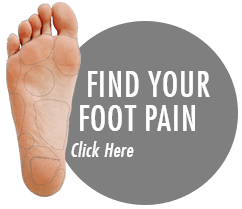BLOG
Blog
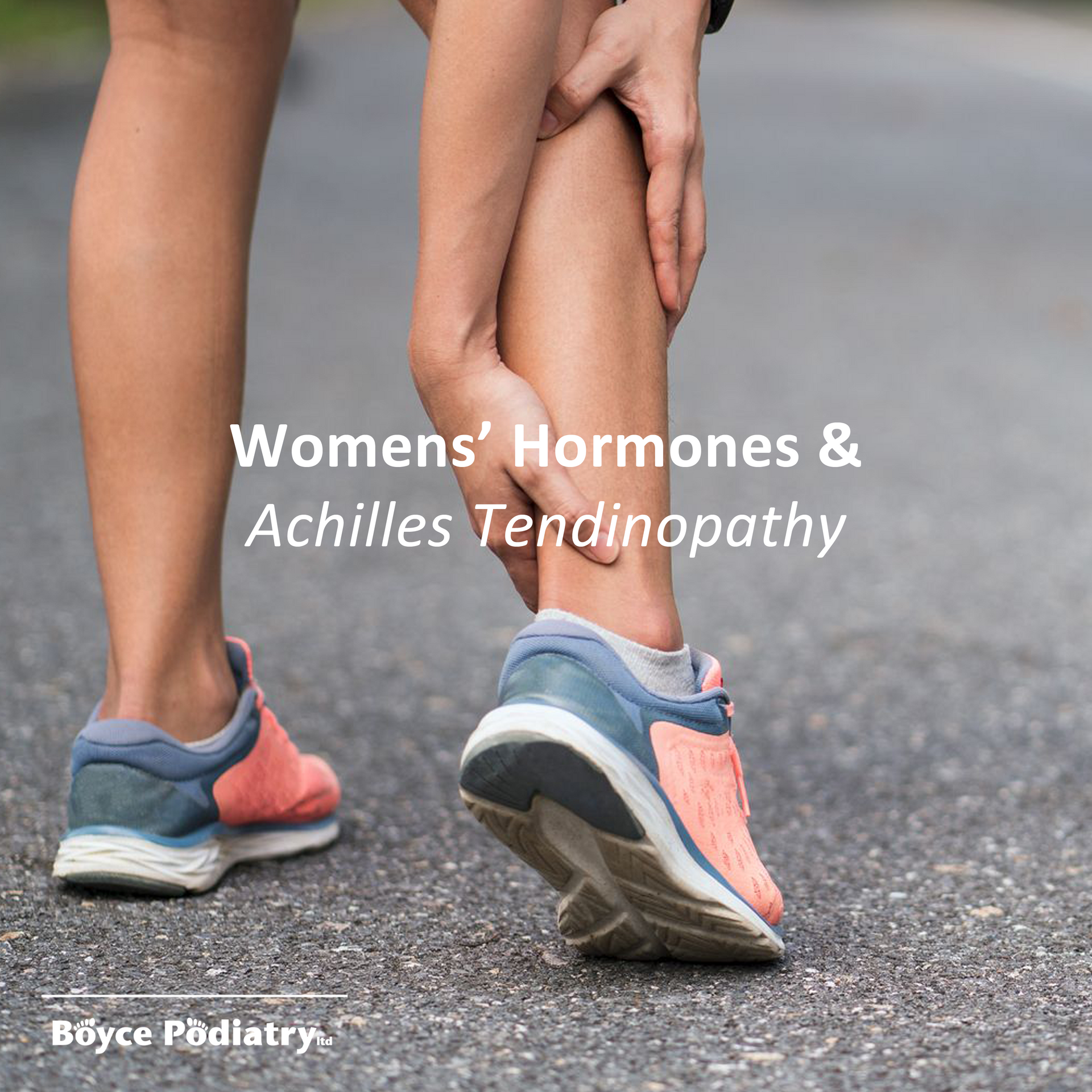
By lynley
•
30 Oct, 2023
As women, our bodies go through many changes throughout our lives, and these changes can impact our overall health, including our feet. One condition that can affect women is Achilles tendinopathy, which is a common injury that occurs in the Achilles tendon. The Achilles tendon is the largest tendon in the body and connects the calf muscles to the heel bone. It is responsible for allowing us to walk, run, and jump, making it an essential part of our foot health. Achilles tendinopathy is a condition that occurs when the Achilles tendon becomes inflamed or irritated, leading to pain and discomfort. This condition can be caused by many factors, including overuse coupled with reduced strength, improper footwear, and hormonal changes. One of the main hormones that can impact the development of Achilles tendinopathy is estrogen. Estrogen is a hormone that is responsible for regulating many bodily functions, including the growth and repair of tissues. When estrogen levels are low, it can lead to decreased collagen production, which can weaken the Achilles tendon and increase the risk of injury. Other hormones that can impact the development of Achilles tendinopathy include progesterone and testosterone. Progesterone is a hormone that is responsible for preparing the uterus for pregnancy, but it can also impact the connective tissues in the body, including the Achilles tendon. Testosterone is a hormone that is typically associated with men, but it is also present in women and can impact muscle and bone health. So, what can women do to prevent and treat Achilles tendinopathy? First and foremost, it's important to maintain a healthy lifestyle, including regular exercise and a balanced diet. Women should also invest in proper footwear and avoid overuse of the Achilles tendon. Heavy resistance strength training has been shown to have amazing benefits on hormone health, bone and muscle health, as well as overall health benefits. If you develop Achilles tendinopathy, there are several treatment options available, including rest, ice, and physical therapy. Boyce Podiatry are also specialists in extracorporeal shockwave therapy, a gold standard treatment for achilles tendinopathy. We offer this alongside a functional strengthening programme. A strengthening program helps to stimulate tendon remodelling and also allows the tendon to adapt to being loaded in a more controlled way. We prescribe individualised strength programs to ensure that your tendon is being loaded in the best way. Some women may also benefit from hormone therapy or other medical interventions to address hormonal imbalances that may be contributing to the condition. In conclusion, women's hormones can impact their foot health and increase the risk of Achilles tendinopathy. However, by maintaining a healthy lifestyle, investing in proper footwear, and seeking medical attention when necessary, women can prevent and treat this condition and maintain healthy and happy feet for years to come.
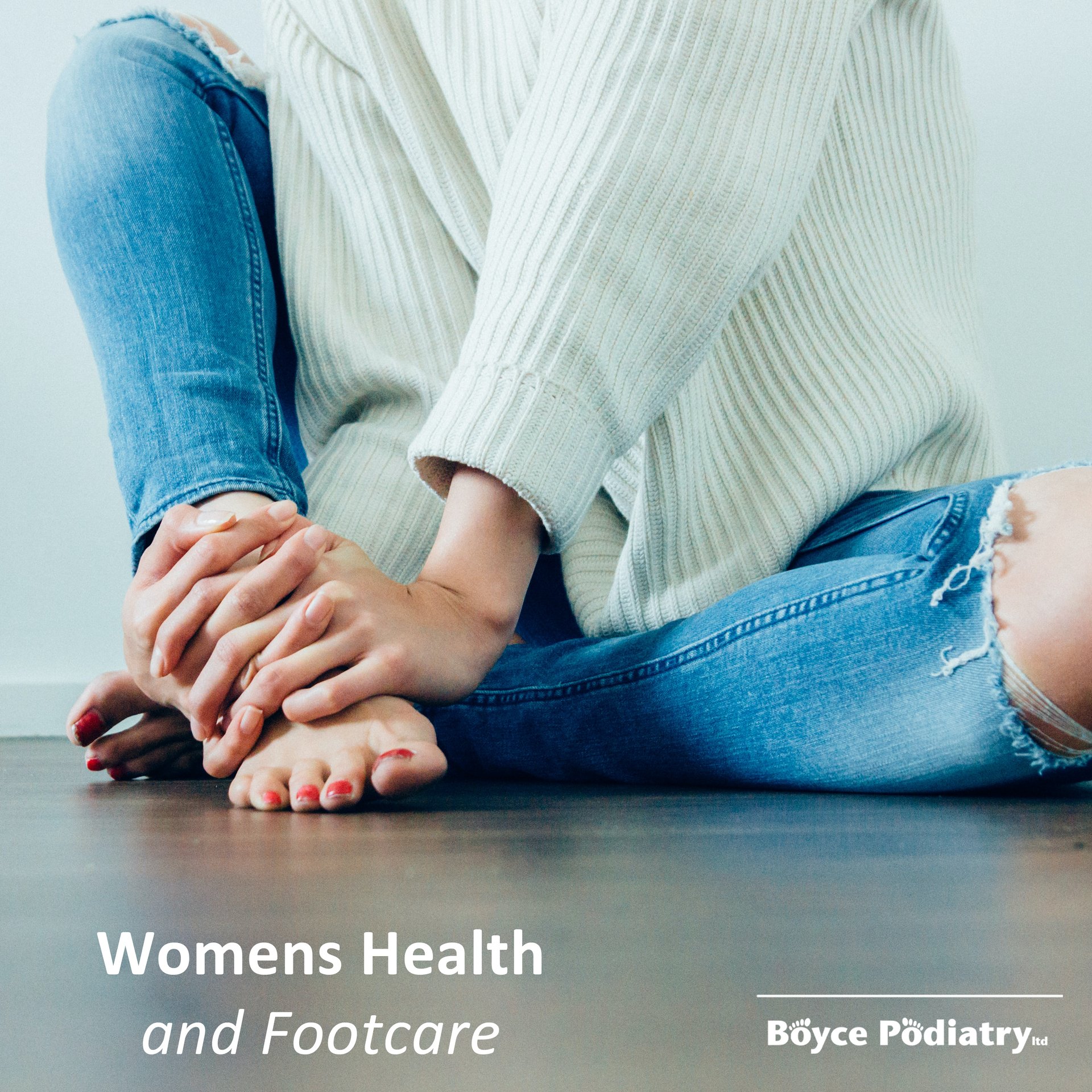
By lynley
•
30 Oct, 2023
As women, we often neglect our foot health. We may focus on our skin, hair, or nails, but our feet are just as important. They carry us throughout the day and can impact our overall wellness. Did you know that in our lifetime, we will walk an average of 121,000 miles? Here are some tips for maintaining healthy and happy feet. First and foremost, invest in proper fitting footwear. Avoid shoes that are too tight or too loose. Opt for shoes with good arch support and cushioning. If you're on your feet for extended periods, consider wearing orthotic inserts for added support. Don't forget to rotate your footwear and avoid wearing the same pair every day. Regular foot care is also crucial. Keep your toenails trimmed and clean to avoid ingrown nails and fungal infections. Moisturize your feet regularly to prevent dryness and cracking. Use a pumice stone to gently exfoliate rough areas and promote circulation. When the hard skin gets too thick and the pumice isn't able to reduce this enough, a Podiatrist is able to remove the hard skin. With the hard skin removed the moisturiser is now able to penetrate the skin again and work its magic. As we get older, our skin starts to produce less oils and therefore our skin feels a lot drier. A moisturiser rich in urea is great for the skin on our feet as the skin is thicker and requires a bit more hydration. Stretching and exercising your feet can also improve their health. Try rolling a tennis ball under your foot to massage the arch and relieve tension. Toe curls and stretches can strengthen the muscles in your feet and improve flexibility. Mobility exercises like being able to lift your big toe up while keeping your smaller toes on the ground and vice versa is also great for extra movement. Lastly, pay attention to any pain or discomfort in your feet. Don't ignore it and hope it will go away on its own. Seek medical attention if you experience persistent pain or notice any changes in the appearance of your feet. In conclusion, taking care of your feet is essential for overall wellness. By following these tips, you can maintain healthy and happy feet for years to come, taking care of your feet means they will take care of you. Remember, happy feet, happy life!
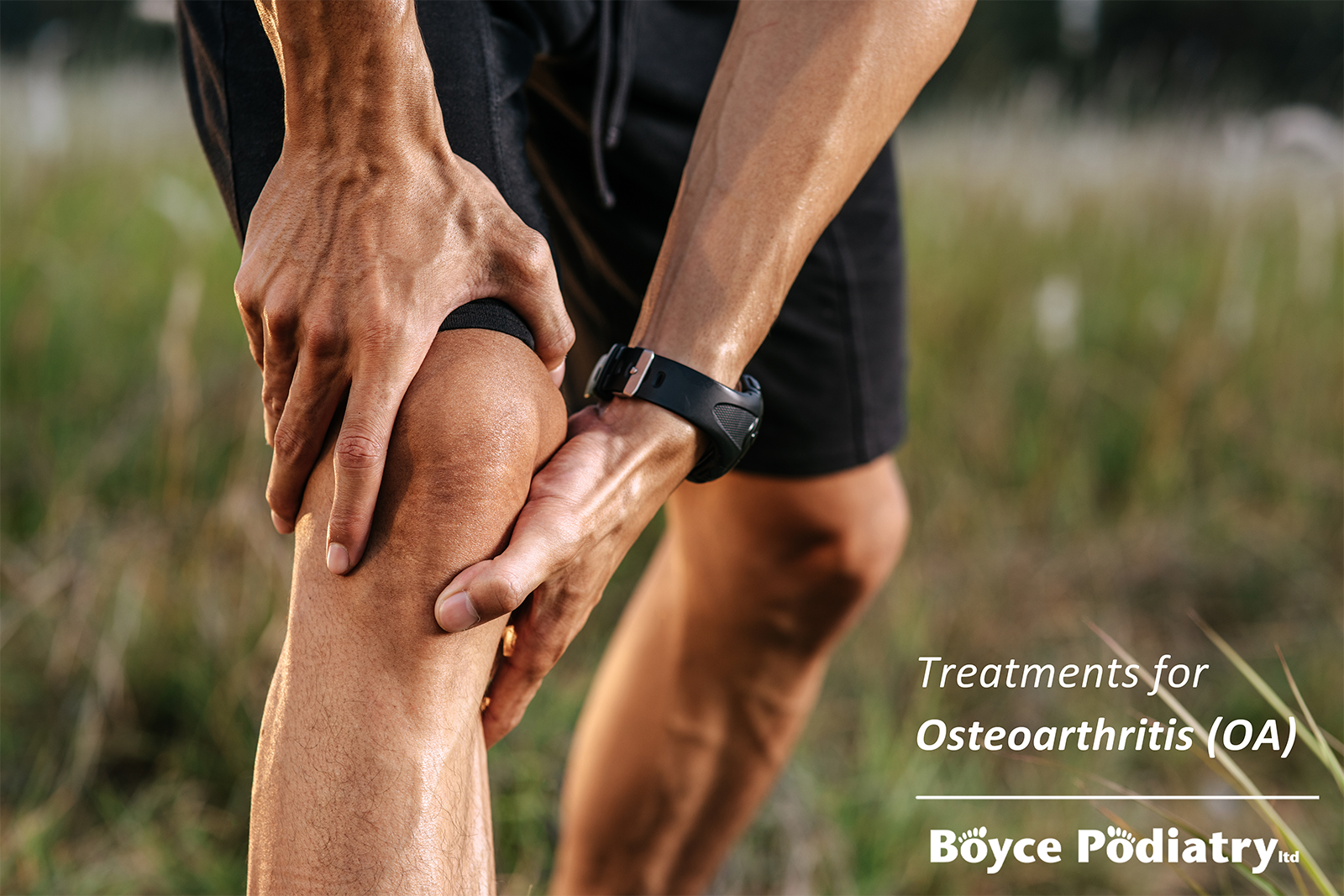
By lynley
•
20 Jul, 2023
As we age, the term “arthritis” seems to become one of the most common terms we hear. Osteoarthritis (OA) can be quite a painful and debilitating condition for some people. The New Zealand Medical Association (NZMA) states, “One in ten New Zealanders are affected by OA and it is said to increase by 76% in the next 20 years due to obesity and population demographics”. The knee joint is the most frequently affected joint when it comes to OA, this is closely followed by the hip joint, and smaller joints such as the hands and feet. After years of OA research and studies, the effectiveness of exercise shows that strengthening the surrounding muscles will support the joint. However, the prevalence of pain can be a deterrent from undertaking the strengthening exercises. Occasionally people are worried about making things worse when completing their exercises. This pattern we slowly need to break in order to get the best outcomes. For this reason educating our clients on OA is important and therefore an exercise regime we would recommend as essential. The pain associated with OA, especially knee OA is linked with the bone marrow oedema, which accompanies OA. One recent study looked at the effect of focussed shockwave therapy ( https://www.boycepodiatry.co.nz/shockwave-therapy ) on bone marrow oedema. Participants had their bone marrow oedema measured using MRI pre and post study. The final MRI scan showed a whopping 86% decrease in the surface area of the bone marrow oedema and significantly reduced pain compared to the control group. Recent studies have also shown the benefit of photobiomodulation therapy (or PBMT) and its effect of increasing femoral cartilage thickness. Using a combination of these above mentioned techniques; shockwave, PBMT, and exercise therapy shows the best results for those looking to take back control of their life. Has your pain stopped you from the 9 holes of golf you used to play? Has it stopped you from running around after the grandkids? Or has it affected your confidence doing day-to-day activities? Why not come in and see what we can do to help get you back up and doing the things you love.
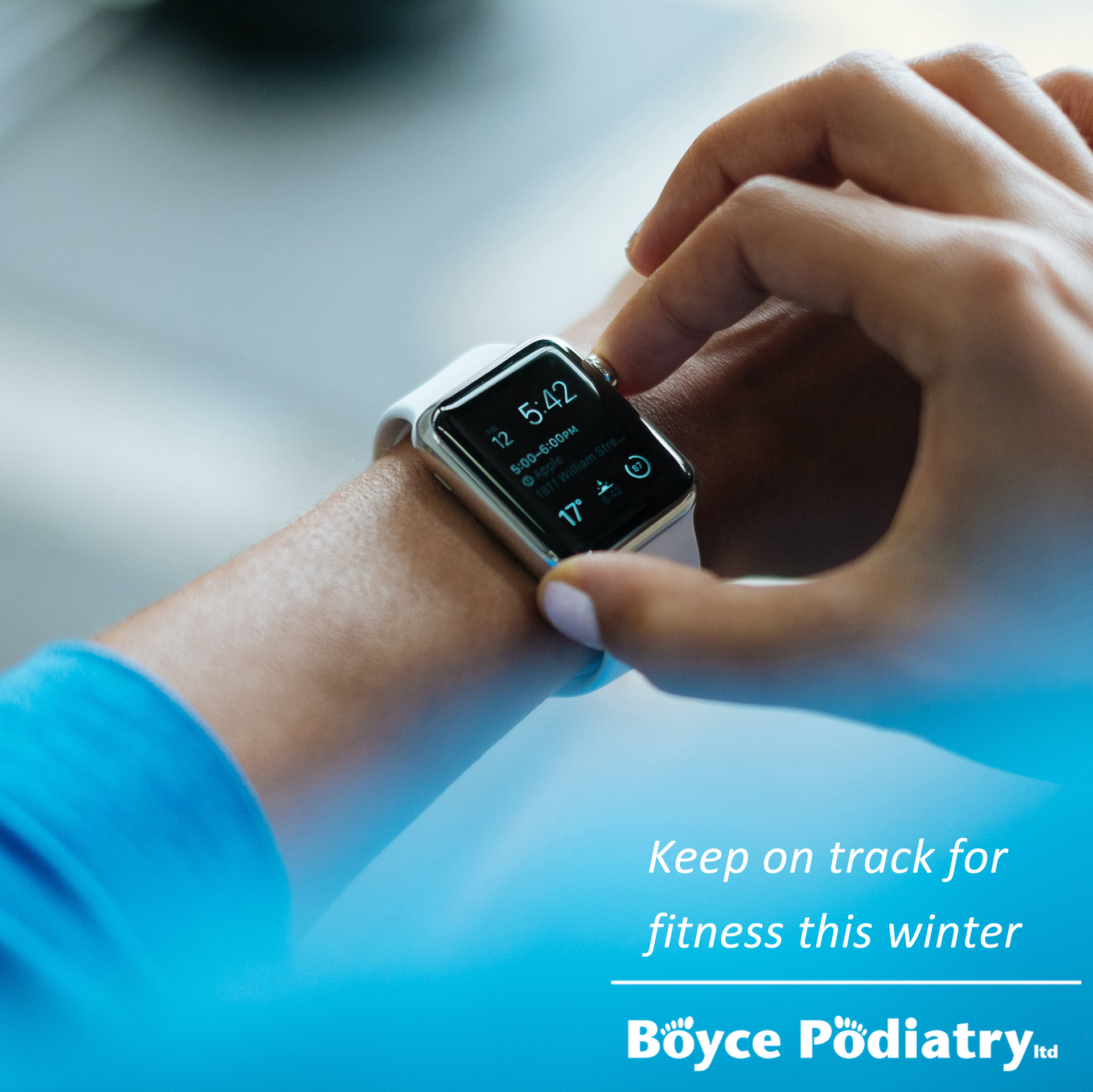
By lynley
•
12 Jun, 2023
What is Shockwave therapy? Shockwave therapy, or its full name extracorporeal shockwave therapy (ESWT) is a specialist treatment Boyce Podiatry has been offering for over 5 years now. It involves the use of high-energy sound waves to stimulate healing in damaged tissues. It is gaining more interest due to its regenerative approach to injury healing, as opposed to the sometimes degenerative effects of cortisone injection therapy. Shockwave therapy has been around for a long time and its first in-clinic session was recorded in the 1980’s. However lithotripsy, which Shockwave is derived from, has been around for much longer. Lithotripsy is the act of using an ESWT to break up kidney stones, but it was soon realized that this could be used on musculoskeletal conditions. We use shockwave to help promote a natural healing response on soft tissue and bone. Here at Boyce Podiatry, we have two shockwave machines (radial & focussed). The radial machine works on more of a superficial level of muscle and tendon; making it great for those pesky achilles tendon injuries and so much more. The radial is also great for smoothing muscle and helping to release trigger points that sit within the muscle. Because of the mechanism of action on the focussed machine, we can go a lot deeper - up to 12cm-13cm of therapeutic effectiveness! We use it on tendons, muscles and bones, which lay deeper - such as gluteal and hamstring muscles and tendons. However, the focussed machine can still be used superficially - making it a great asset to have at our disposal. What are the benefits of shockwave therapy? One of the main benefits of ESWT is that it is a non-invasive treatment. This means that there is no need for surgery or other invasive procedures such as local anesthetic, which can be painful and require a long recovery time. ESWT is also relatively painless with most patients reporting only a mild tingling sensation or deep ache during the treatment. Another benefit of ESWT is that it is a safe treatment option. Unlike surgery or other invasive procedures, there is no risk of infection or other complications with ESWT. The treatment is also very precise, meaning that only the affected area is targeted. Does it hurt? During your first session of Shockwave - especially the first bit of the session, we desensitize the area by using a lower dose of shockwave (or photobiomodulation therapy- one of our other specialist treatments). The shockwave is thought to disrupt the pain signals. Often because it's not something your body has experienced before, it is a bit more aware of the sensation. Although, the feeling settles and becomes more tolerable and even enjoyable - people often describe it as the good kind of pain “like it's really getting in there and doing something”. We normally keep your pain level at about a 4-5/10 to make sure we get enough of a therapeutic effect into the tissue we are treating. However everyone is different and we adjust the settings according to your pain level. What conditions can shockwave actually be used for? Shockwave therapy can be used for treating many conditions such as; Musculoskeletal pathologies & Tendinopathies ; Achilles tendinopathy Plantar heel pain syndrome (previously known as plantar fasciitis) Plantar fibromatoma Gluteal tendinopathies Hamstring tendinopathies Myofascial pain and release of trigger points Bone injury and bone pathology ; Stress fractures Non healing fractures (on specialist referral, MRI findings) Shin splints Management of osteoarthritis(on specialist referral, MRI findings) Bone marrow oedema (on specialist referral, MRI findings) Neurological pathologies ; Spasticity Polyneuropathy If you've had aches and pains slowing you down or concerning you, why not pop into the clinic and see whether shockwave or one of our other services could benefit you. Photo inset below: Podiatrists Kylie (left) and Lynley (right) with enovis educator, Cliff Eaton from the UK. We got to spend one on one time with him last Friday following a workshop on the Thursday evening involving specialist training in shockwave therapy and photobiomodulation (lightforce) therapy.
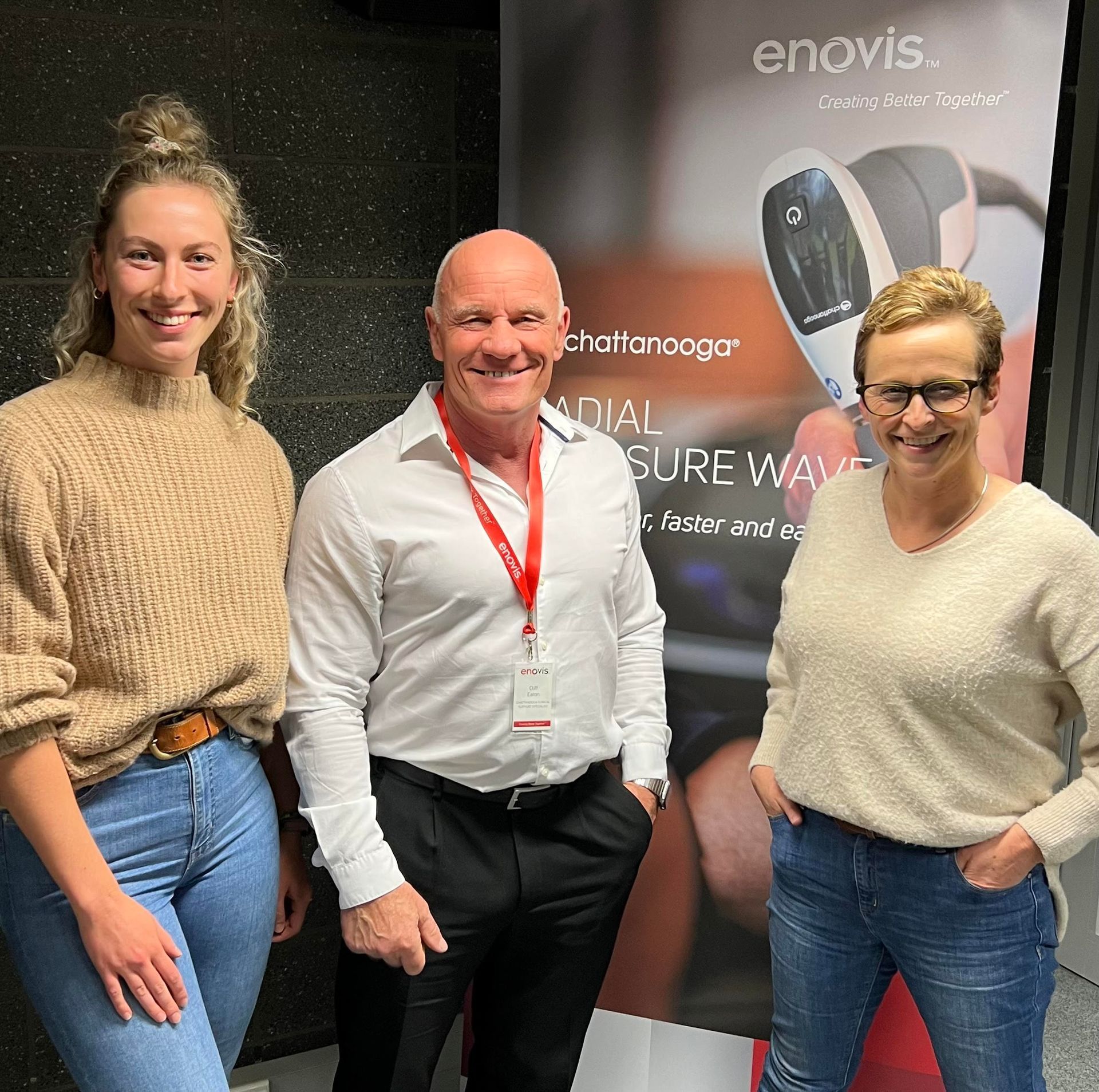
By lynley
•
19 May, 2023
What is Shockwave therapy? Shockwave therapy, or its full name extracorporeal shockwave therapy (ESWT) is a specialist treatment Boyce Podiatry has been offering for over 5 years now. It involves the use of high-energy sound waves to stimulate healing in damaged tissues. It is gaining more interest due to its regenerative approach to injury healing, as opposed to the sometimes degenerative effects of cortisone injection therapy. Shockwave therapy has been around for a long time and its first in-clinic session was recorded in the 1980’s. However lithotripsy, which Shockwave is derived from, has been around for much longer. Lithotripsy is the act of using an ESWT to break up kidney stones, but it was soon realized that this could be used on musculoskeletal conditions. We use shockwave to help promote a natural healing response on soft tissue and bone. Here at Boyce Podiatry, we have two shockwave machines (radial & focussed). The radial machine works on more of a superficial level of muscle and tendon; making it great for those pesky achilles tendon injuries and so much more. The radial is also great for smoothing muscle and helping to release trigger points that sit within the muscle. Because of the mechanism of action on the focussed machine, we can go a lot deeper - up to 12cm-13cm of therapeutic effectiveness! We use it on tendons, muscles and bones, which lay deeper - such as gluteal and hamstring muscles and tendons. However, the focussed machine can still be used superficially - making it a great asset to have at our disposal. What are the benefits of shockwave therapy? One of the main benefits of ESWT is that it is a non-invasive treatment. This means that there is no need for surgery or other invasive procedures such as local anesthetic, which can be painful and require a long recovery time. ESWT is also relatively painless with most patients reporting only a mild tingling sensation or deep ache during the treatment. Another benefit of ESWT is that it is a safe treatment option. Unlike surgery or other invasive procedures, there is no risk of infection or other complications with ESWT. The treatment is also very precise, meaning that only the affected area is targeted. Does it hurt? During your first session of Shockwave - especially the first bit of the session, we desensitize the area by using a lower dose of shockwave (or photobiomodulation therapy- one of our other specialist treatments). The shockwave is thought to disrupt the pain signals. Often because it's not something your body has experienced before, it is a bit more aware of the sensation. Although, the feeling settles and becomes more tolerable and even enjoyable - people often describe it as the good kind of pain “like it's really getting in there and doing something”. We normally keep your pain level at about a 4-5/10 to make sure we get enough of a therapeutic effect into the tissue we are treating. However everyone is different and we adjust the settings according to your pain level. What conditions can shockwave actually be used for? Shockwave therapy can be used for treating many conditions such as; Musculoskeletal pathologies & Tendinopathies ; Achilles tendinopathy Plantar heel pain syndrome (previously known as plantar fasciitis) Plantar fibromatoma Gluteal tendinopathies Hamstring tendinopathies Myofascial pain and release of trigger points Bone injury and bone pathology ; Stress fractures Non healing fractures (on specialist referral, MRI findings) Shin splints Management of osteoarthritis(on specialist referral, MRI findings) Bone marrow oedema (on specialist referral, MRI findings) Neurological pathologies ; Spasticity Polyneuropathy If you've had aches and pains slowing you down or concerning you, why not pop into the clinic and see whether shockwave or one of our other services could benefit you. Photo inset below: Podiatrists Kylie (left) and Lynley (right) with educator Envois, Cliff Eaton from the UK. We got to spend one on one time with him last Friday following a workshop on the Thursday evening involving specialist training in shockwave therapy and photobiomodulation (lightforce) therapy.
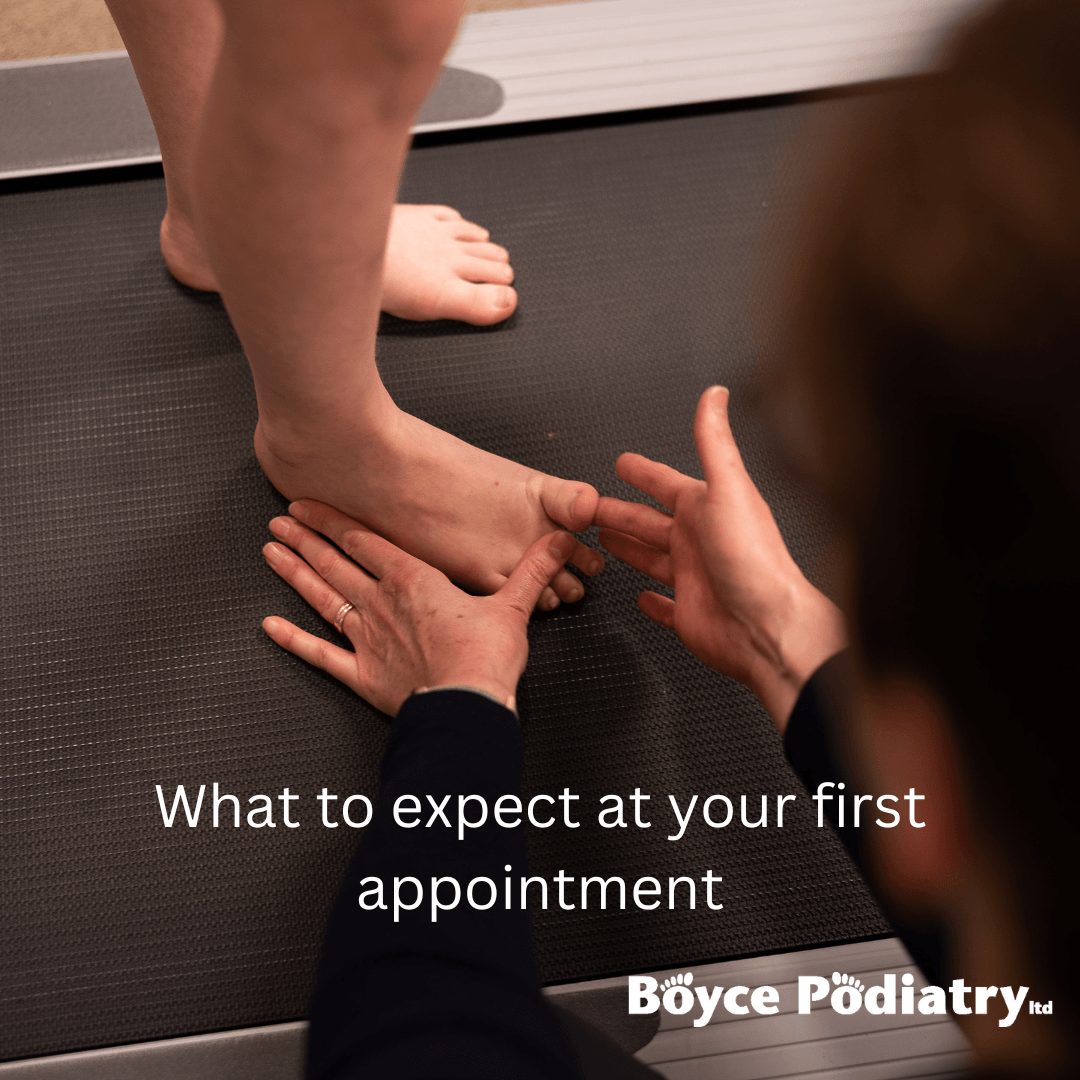
By lynley
•
01 Nov, 2022
“If I come in for an initial assessment / appointment, what should I bring and what should I be prepared for?” The initial consultation gives us a chance to get to know you. We will do a comprehensive assessment to find out how we can help you. You can expect us to go over the following: 1. Discuss your foot and general health Details of past and present problems and treatments. We will note any medication you take and any allergies you may have. If you can bring a list of any current medications that is very helpful. We will talk through your goals and the type of exercise or training you are currently doing. 2. Goals. What’s the main driver behind you coming in? Is it that you can’t get out for a walk anymore, or you can’t kick the ball around with the kids or keep up with the grandkids? We use these to measure against and chart your success as you move along with your plan 3. Our physical examination involves: checking your joint mobility Locating any painful or tender spots Video gait - we will take a video of you walking, either on the treadmill or down the hallway some strength assessments 4. From there we will discuss a management plan/ develop an action plan with you and figure out what will be best for you to get you back on your feet, going from better to best. If possible, try to wear clothes that you feel comfortable in and will allow your Podiatrist to assess as far up as your knees. If you can’t wear shorts, wear pants that you can roll up. You should also bring in your running/walking/sports shoes and shoes that you wear often. We can then make comparisons between how you walk/run in shoes and barefoot.
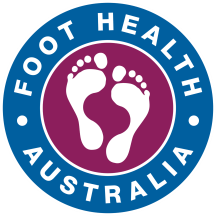
By lynley
•
16 Oct, 2022
This week is Australian Foot Health Week - a nationally recognised health awareness campaign run annually in October. Foot Health Week promotes good foot health and highlights the role podiatrists play in keeping patients pain free and moving. New research by the Australian Podiatry Association shows those who had visited a podiatrist for foot pain were unexpectedly found to have other life-threatening health issues. Key research findings: • Almost 2 out of 5 Australians (39%) had other life-threatening health issues identified by their podiatrist including circulatory problems (33%), diabetes (25%), gout (23%), heart problems (11%) and other health issues (7%). • Pain is the number one reason (59%) Australians would visit a podiatrist. • 1 out of 5 (20%) of Australians see a GP for foot pain despite podiatrists being the foot health experts. • Most Australians (93%) that saw a podiatrist were satisfied or extremely satisfied with their care. • 85% of people who saw a podiatrist would recommend to their friends or family based on their positive experience. • 91% of Australians said their condition and/or movement improved through seeing a podiatrist. • Over half of Australians (55%) have never received advice on correct footwear. Source : The Australian Podiatry Association ( podiatry.org.au )
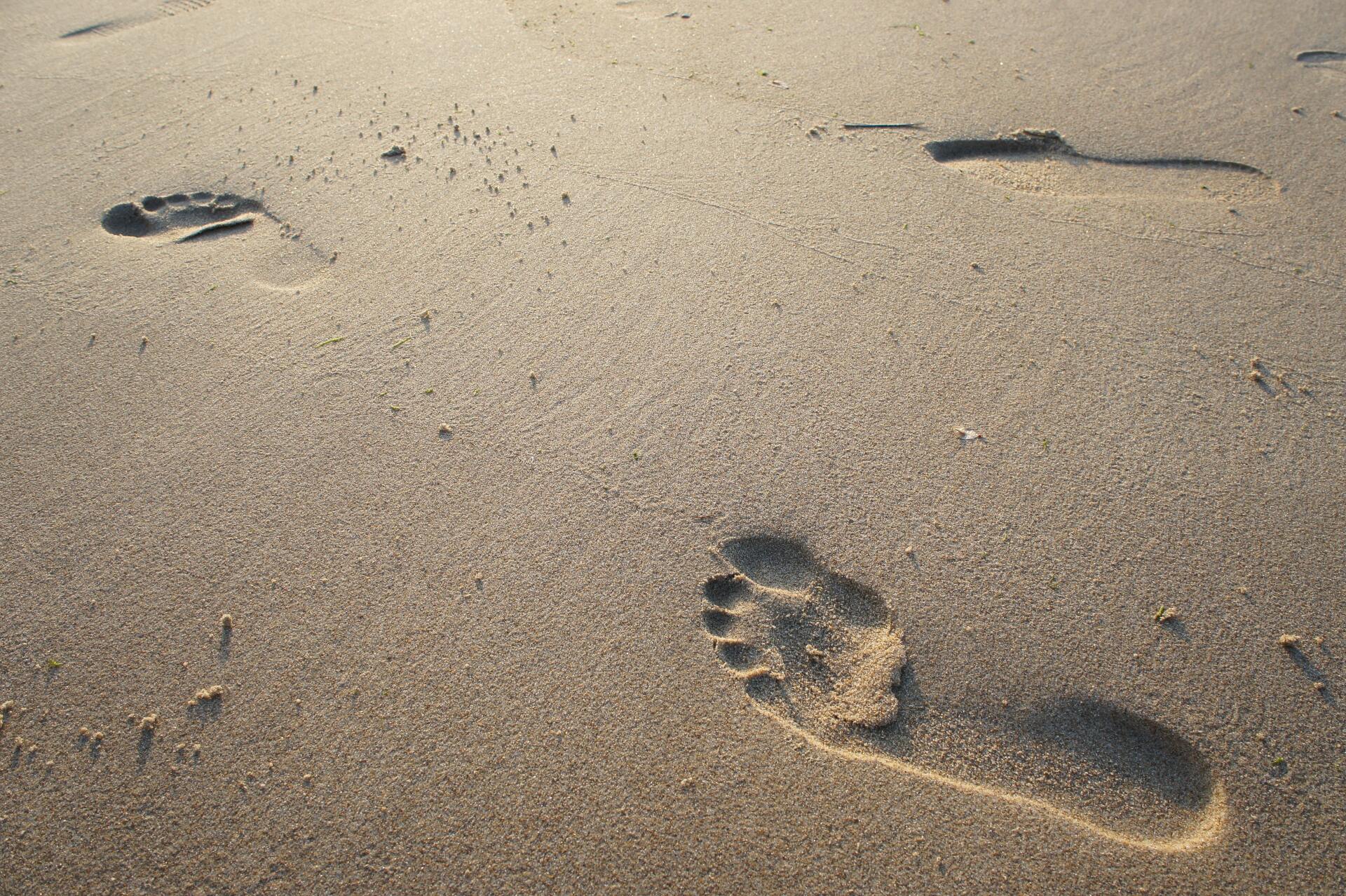
By lynley
•
15 Oct, 2022
Follow our tips to make sure your feet are ready for the demands of our Hawke's Bay Summer. Tip #1 Moisturise Dry skin isn’t a very effective barrier against harm. Regular moisturising keeps the skin healthy and away from cracks and potential infection. Use a moisturizer that penetrates and delivers it’s moisture into the skin. Moisturisers that just create a barrier to prevent moisture being evaporated will just get worn off by the flips flops and jandals that slap against the heel when you walk. Tip #2 Slip, Slop, Slap on the SPF After being covered up all winter, the skin on your feet need SPF sunscreen to protect them from our harsh sun. Tip #3 Wash Your Feet Everyday Going barefoot more often over summer means our feet can get quite grubby and pick up more bacteria. It’s important to give them a good ol’ scrub daily to reduce bacterial load. Don’t forget to dry between your toes to prevent tinea fungal infections. Tip #4 Take Care at the Beach After all that support from shoes and orthotics over winter, suddenly going barefoot on the soft sand at the beach can be a bit of a shock. If you want to go for a long walk along the beach, we recommend wearing your shoes and orthotics. Just give them a good old shake before getting back in the car. Tip #5 Nail Polish - Choose Wisely Choose nail polish with ingredients that won’t damage and weaken your nails. Dr Remedy & Kester Black are brands that follow this philosophy of care. You can find out more about Dr Remedy on the skin and nail tab of our website ( boycepodiatry.co.nz/nail-and-skin-care ) We have a great range of colours to choose from going into summer.
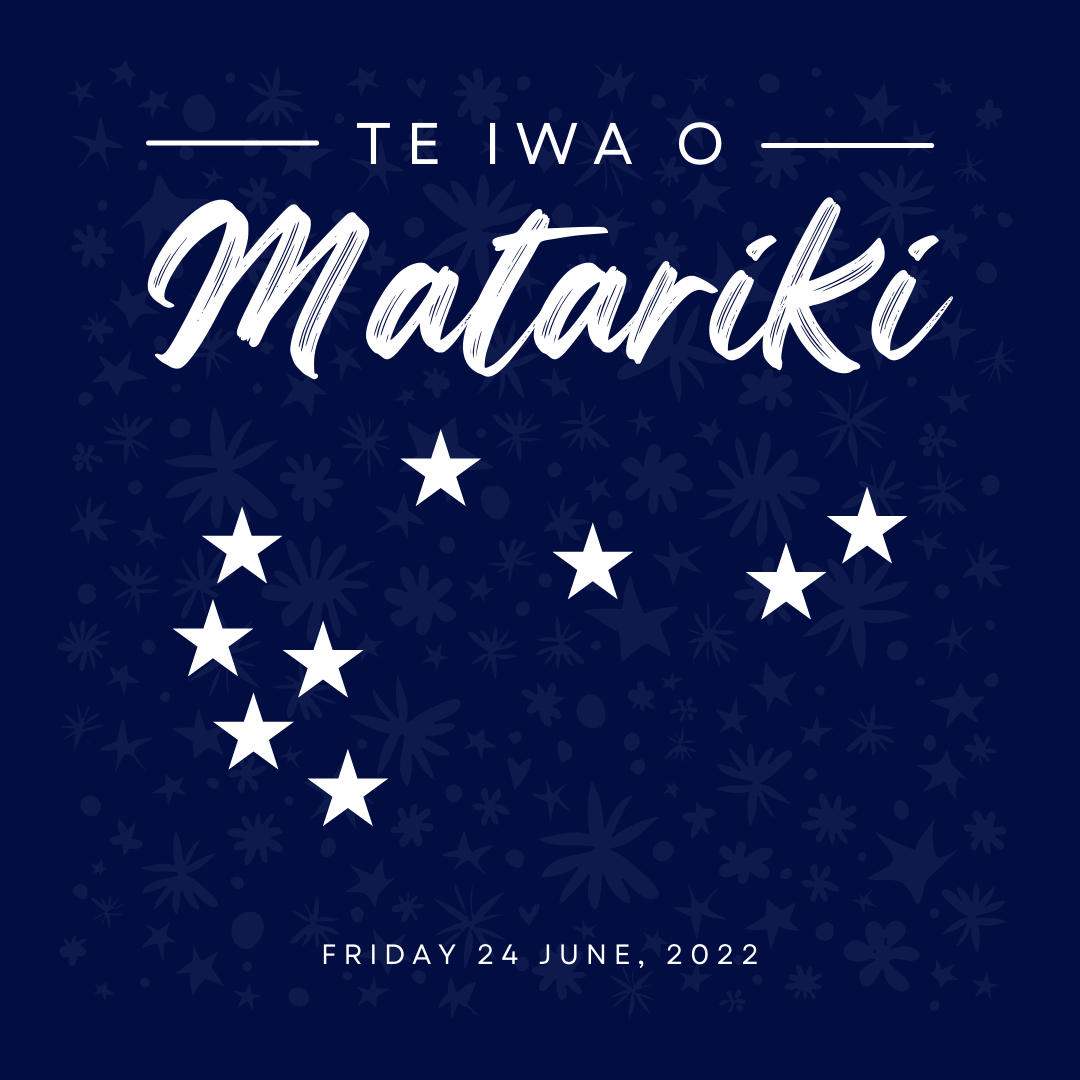
By lynley
•
28 Jun, 2022
According to the Māori calendar (Maramataka Māori), the rising of Matariki brings the old lunar year to a close and marks the beginning of the new year. Interestingly, some iwi celebrate Puanga instead of Matariki. This is due to the fact that in some parts of New Zealand, Matariki is not visible and Puanga is the next closest star of importance. At Boyce we love the story of Matariki and her children, and how each one acknowledges a different aspect. For example, sharing our own history, holding those past and present close to our hearts, and recognising our goals and hopes for the year ahead. For Matariki this year, we decided to hold a shared lunch to further learn more about each of our cultures (we have a nice mixed team in the clinic). Some featured New Zealand items were some fluffy cheese scones baked by Susan and Lynley baked the famous Anne Sutherland chocolate. Also on the sharing table we got to experience the taste of Scotland. Some scotch pies and some Stroma malt whiskey liquer bought in by Diane. A taste of South Africa was another among the table, a milktart dessert baked by Kylie. What did you do to acknowledge or celebrate Matariki? #bettertobest #matariki2022
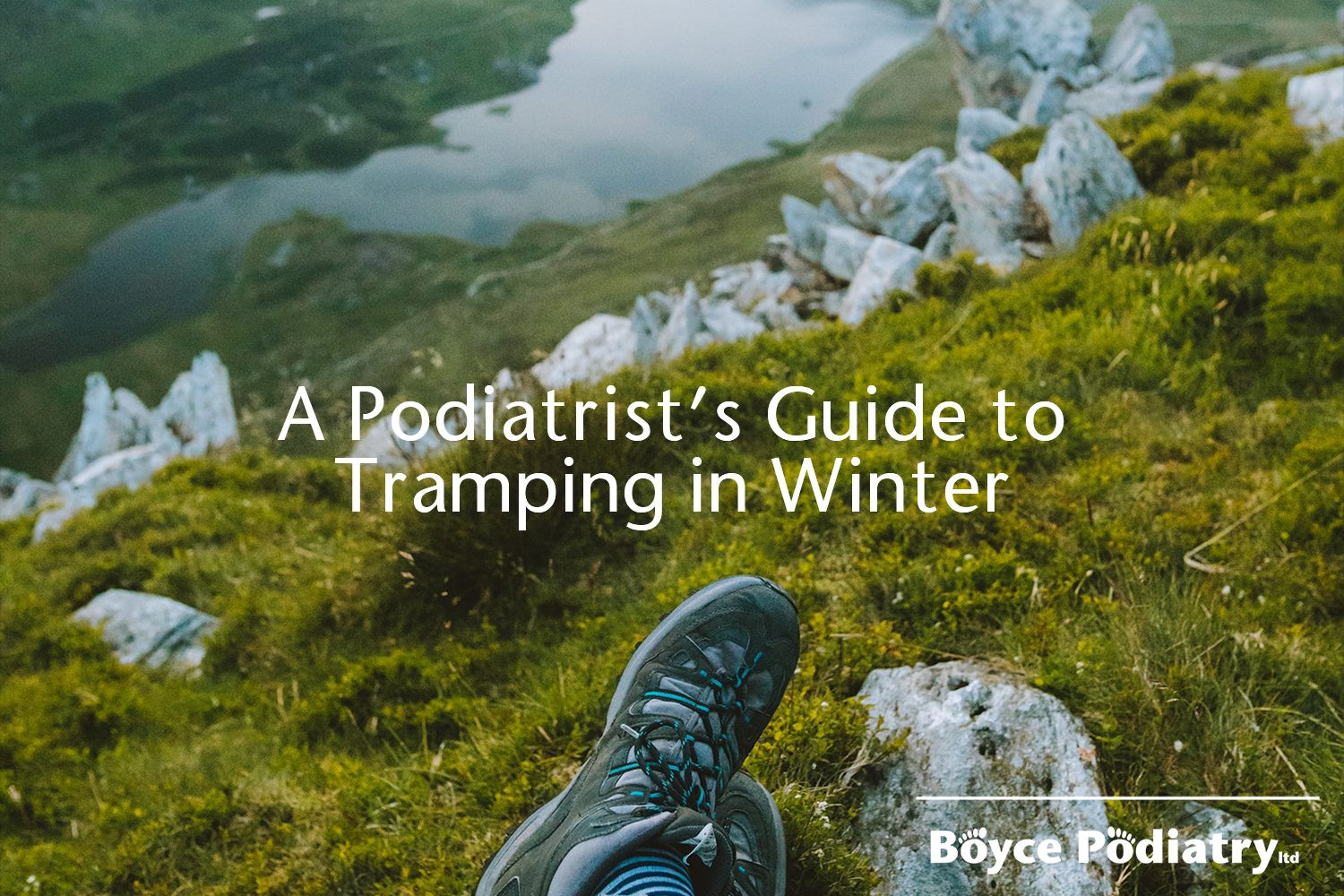
By lynley
•
12 May, 2022
Whether you’re a beginner who’s looking to get into tramping or an experienced hiker this blog is for you. There’s no better feeling than reaching the summit of a hike, taking a moment to appreciate all the beauty around you. A feeling that isn’t so great is your foot being in agony after a long hike. Whether it’s those painful hotspots creating blisters or another niggle you can feel coming along, we’ve compiled a few of our favourite tips and tricks to have in your back pocket and first aid kit. What’s the Best Sock For Tramping? This might sound like common sense but is often overlooked. Not only is packing a few extra pairs of socks a good thing to add to your pack but the type and quality of sock is also important. There are a few different things to look for when looking at the type of sock. a. Fabric : Wool is the most popular type of fabric because of its natural antimicrobial properties (which helps to retain smell), its temperature regulation and it helps with moisture wicking. b. Cushioning : There are a few types of cushioning available - no cushioning, light, medium, and heavy. It’s a bit of an experiment at the start to see what kind you like best for your type of activity. Some socks like Thorlo and Drymax have especially woven fibres to help wick sweat/water away from the skin. You can get double lined socks to help reduce friction on hot spots. c. Height : No show, ankle, crew, knee high. Height is an important element when choosing your sock. A crew height is the classic height of hiking socks, it fits just above the height of the boot and helps to protect against any abrasion from a higher cut boot. What’s the best shoe for tramping? Starting off on your hiking journey it can be pretty overwhelming knowing what to choose with lots of choices on the market. Footwear is largely dependent on the type of activity you’re doing. Hiking boots are a popular option as they provide a lot more ankle stability especially over the uneven terrain. However, trail sneakers have become very popular recently, with their extra grip on the bottom they also allow more movement through the ankle. This style is ideal for those who are keen to do some more trail running. Make sure you have the right balance of support and cushioning for you and the activity you want to be doing. We use the expertise of The Shoe Clinic to help our clients find the right fit. Blister Prevention Tips Hikers Wool is one of Kylie’s all time favourites. Wool is not only natural but it also offers moisture wicking properties alongside cushioning. If you get blisters around your toes, weave the hikers wool between your toes to reduce the friction which is what causes blisters. You could also use some low friction tape, or lubricants such as vaseline or gurney goo on these areas to reduce friction. What Not to use for Blister Prevention: Blister Plasters For us these are at the very bottom of the list to have as an essential. Many people use them as a prevention tool but the bottom line is because they stick so well to the skin, if a blister starts under the plaster, when you peel it off you deroof the blister as well - we don’t want this to happen as this increased the risk of infection. A few other additions to add to your toolkit include the normal things like ice spray, plasters (eg melolin or telfa pads if blisters open), and strapping tape. If you’ve got any other aches or pains don't hesitate to give us a call and make an appointment. Watch out for our future blog on blisters prevention strategies.
Follow Us
Call Us Now!Boyce Podiatry Ltd
Village Health Centre
33 Napier Road, Havelock North 4130
06 877 3249
Want to stay informed? Follow us.

